 By Mark Gillies
By Mark Gillies
November 11, 2014
Burlington, ON.
The Kerns family is prominent in the history of the city. The family immigrated as Loyalists in 1803. They had originally emigrated from Germany to the American colonies. A Kerns was the first settler to buy land from Joseph Brant: 200 acres on the east side of Brant Street.
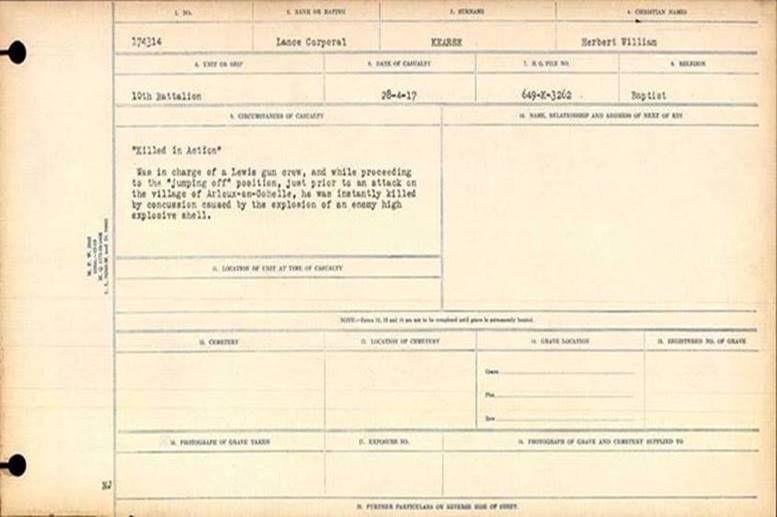
The death details document sets out in short stark sentences how Kerns died.
Private Kerns was born in Burlington, Ontario, south of Milton and was son to Edward Bruce Atkinson and Sarah Kerns of Zimmerman, Ontario. He attested to the 164th Infantry Battalion on March 23, 1916. From there he passed through the 2nd Reserve Battalion prior to his service posting with the 102nd Battalion (4th Division, 11th Infantry Brigade) on February 28, 1918.
On October 4, 1918 Private Kerns was sent “dangerously ill” to the 33rd Casualty Clearing Station with appendicitis. The unit had recently returned from front line duty at Bourlon Wood at the Battle of Canal du Nord and Cambrai. The unit had been on loan to the 3rd Division.
He was subsequently sent to the No. 8 Stationary Hospital Wimereux and then admitted to hospital in Manchester, England. October26, 1918 where he received surgery. He was discharged “fit for duty” to the 8th Reserve Battalion in Witley on January 31, 1919.
Private Kerns was admitted to Kinmel Park Military Hospital with severe abdominal pains at 4 pm March 7, 1919. He subsequently died at the No. 9 General Hospital Kinmel Surgical Hospital at 8 am March 9, 1919 after surgery to relieve and intestinal obstruction. His service record is very detailed on this event.
William Kenneth Atkinson Kerns died of an obstruction in his stomach and was buried in a Parish churchyard, Bodelwyddan (St. Margaret), Flintshire, United Kingdom in Wales on October 2, 1919.
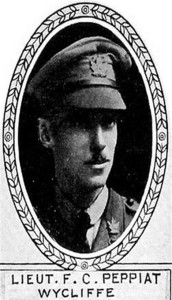
Peppiat, a graduate of Wycliffe College
Frederick Charles Peppiatt, a graduate of Wycliff College served at the Somme and Vimy Ridge. He died May 2nd, several months after marrying in Toronto.
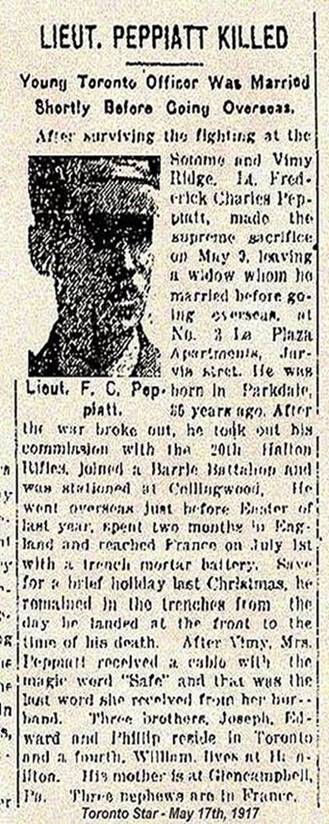 Peppiatt spent almost all of his war time experience in the trenches where foot rot was common. He was given a short break at Christmas when he was able to send a single word cable to his wife – SAFE; that was the last word she received from her husband,
Peppiatt spent almost all of his war time experience in the trenches where foot rot was common. He was given a short break at Christmas when he was able to send a single word cable to his wife – SAFE; that was the last word she received from her husband,
Peppiatt had three nephews serving in Europe.
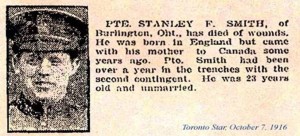 Private Stanley F. Smith was born in England, came to Canada with his Mother and settled in Burlington. He died of wounds. He was single.
Private Stanley F. Smith was born in England, came to Canada with his Mother and settled in Burlington. He died of wounds. He was single.
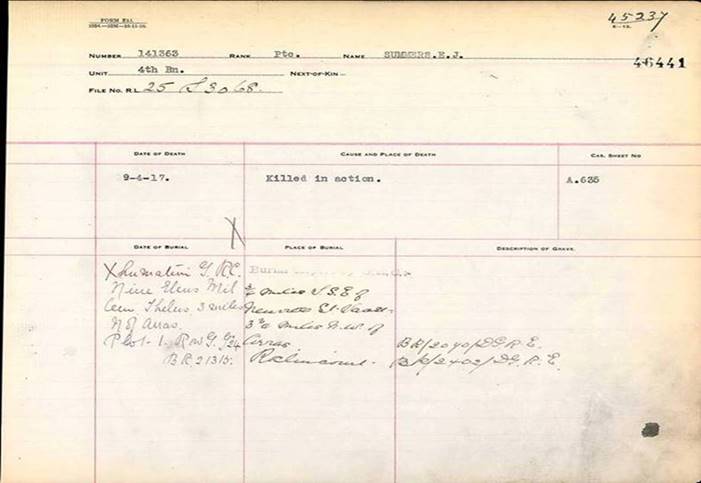
Details on the death of Private Edward Summers.
Private Edward Summers was reported to have been wounded in the face from a piece of shrapnel. The short news report has some detail that is hard to decipher on the army Death detail documents. Not much more is revealed other than his death took place on September 4th, 1917
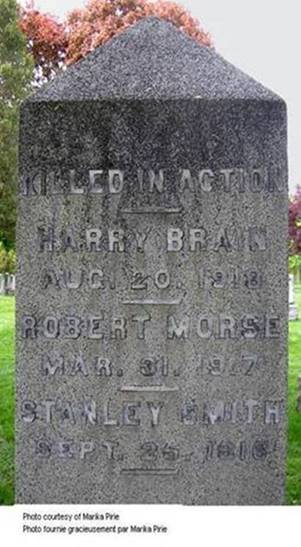
The names of Harry Brain and Robert Morse appear on the same marker.
Private Harry Brain was in the engineering Corps. These men were commonly referred to as “Sappers”. Brain was with a party of Sappers at the edge of a wood where an enemy shell landed, instantly killing brain and 12 other soldiers.
Private Robert Morse was of the party of soldiers killed in the same action as Private Bain.
Charles Hartley Allen was killed in France on August 8th , 1918 . He worked in the hardware business and spent all of his life in Burlington where he was well liked and respected.
Allen was a sports enthusiast who left a brother and three sisters along with his parents to mourn his death when the telegram arrived from Ottawa.
This six part series of articles on the 38 men whose names appear on the cenotaph just behind city hall is the beginning of a new career step for me.
In the near future I will be writing a regular column for the Gazette that will be called Who Knew? I will be writing about the history of Burlington and its people and will continue with my writing on the history of the Freeman Station and its restoration.


















